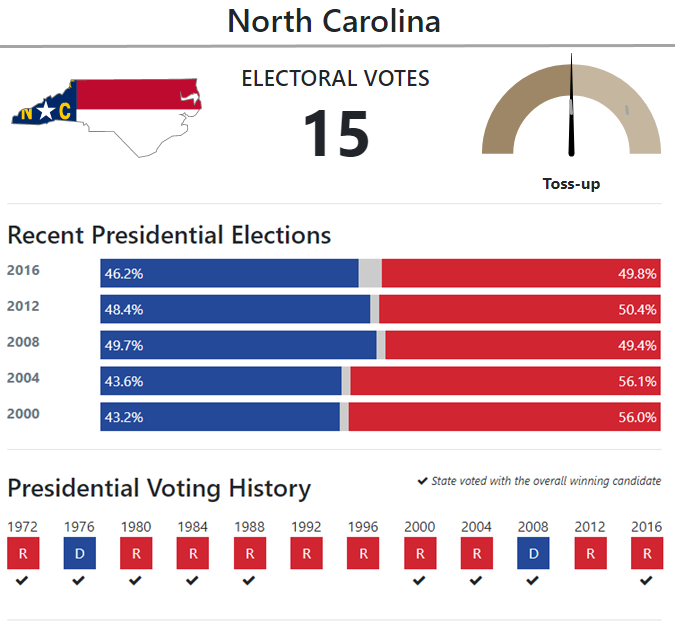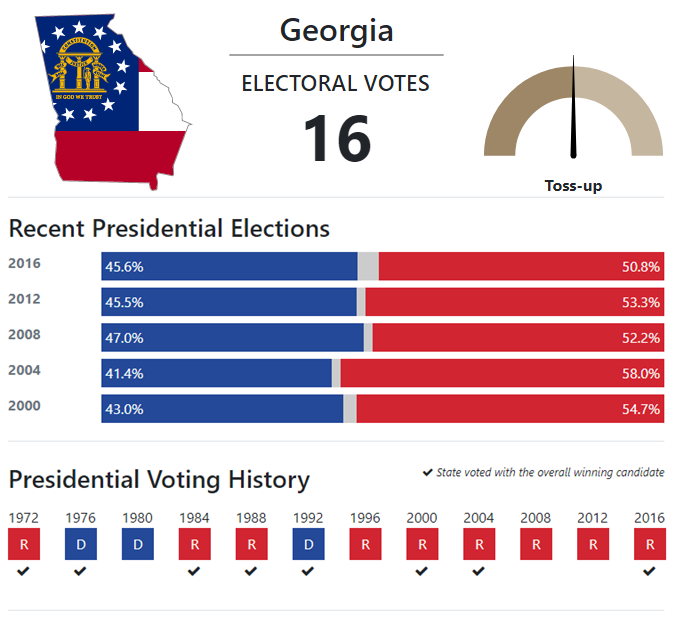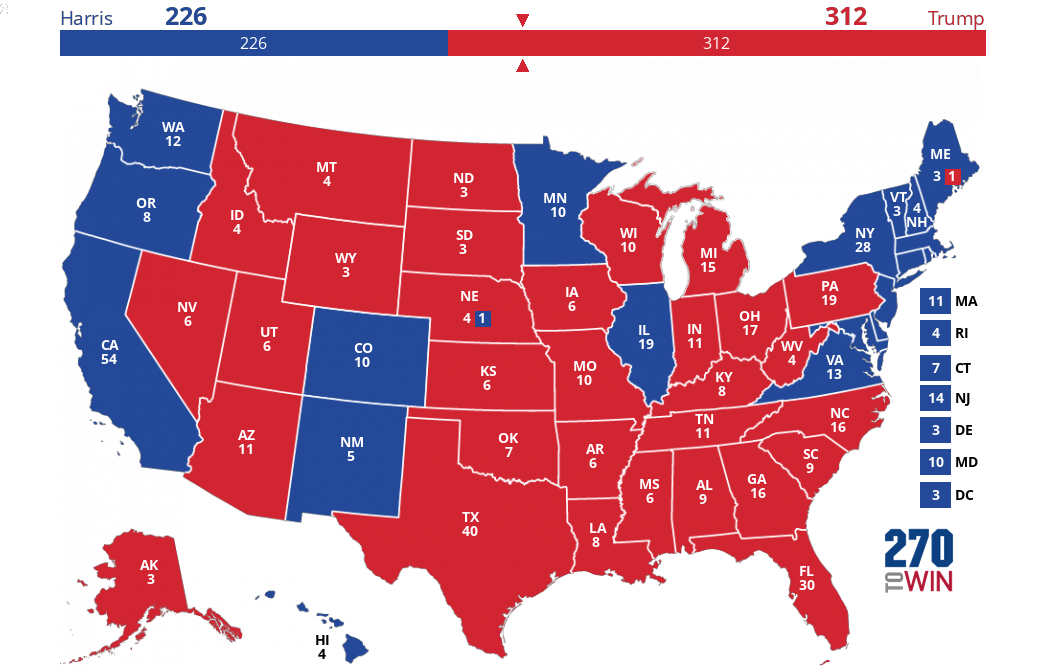Election News
Wisconsin Called for Biden; ME-2 for Trump: Remaining Paths to 270 Electoral Votes
By 270toWin Staff - November 4, 2020
Since our earlier article, Wisconsin was called for Joe Biden, while Maine's 2nd district was won again by Donald Trump. Wisconsin becomes the first state to flip from 2016, although Biden did also capture Nebraska's 2nd district.
This leaves seven states where a winner has not been projected. Based on the current map, there are 18 paths for Biden to 270, 11 for Trump and 2 that would result in a 269-269 tie.
Some outlets have called Arizona for Biden; our results provider Decision Desk HQ has not as of yet.
Presidential Election Undecided: Remaining Paths to 270 Electoral Votes
By 270toWin Staff - November 4, 2020
In races called by our results provider Decision Desk HQ, Joe Biden has 227 electoral votes to 213 for Donald Trump as of early Wednesday morning. Aside from Biden winning the electoral vote associated with Nebraska's 2nd district, the map is identical to 2016 in the called states.
Based on the current map, there are 37 paths for Biden to 270, 24 for Trump and 11 that would result in a 269-269 tie. Some are obviously more likely than others. FOX has called Arizona for Biden, although that has not been confirmed by others.
Click the image below to use our 'Road to 270' feature to game out those remaining states.
Sabato's Crystal Ball: Final Election Forecast
By 270toWin Staff - November 2, 2020
This is the final 2020 election forecast from Sabato's Crystal Ball. As is their custom, races with a toss-up rating are projected as leaning toward a party. The only exceptions this year are for the two Georgia U.S. Senate races - the forecaster sees those both as likely headed for a runoff.
November 2 updates and analysis
Maps of the final Crystal Ball projections follow. Click or tap any of them for an interactive version.
The Road to 270: North Carolina
By Drew Savicki - November 2, 2020
This is the 51st and final installment in The Road to 270 series. The column is written by Drew Savicki, a 270toWin elections and politics contributor. Contact Drew via email or on Twitter @DrewSav.
North Carolina has transformed from being the heart of the tobacco industry in the old south to a bustling hub for business and technology. The Tar Heel state has shed its traditional conservative lean in favor of a decidedly purple or light pink status. A population boom over the last 10 years has brought enormous change to North Carolina. Bitter polarization has come to grip the state's politics during this period, with the Tar Heel state the subject of numerous court battles over voting rights, LGBT rights, same sex marriage, etc.
Politico: Final Election Forecast
By 270toWin Staff - November 2, 2020
This is Politico's final forecast for the 2020 general election.
Uncontested: House Races with no Major Party Opposition
By 270toWin Staff - October 30, 2020
While over 300 of the 435 House seats are considered safe for the incumbent party, there is a subset that is especially solid: those with no major party opposition. This year, 27 seats fall into that category, down from 42 in 2018. 19 seats have no Republican candidate on the ballot, while eight have no Democratic candidate.
The list falls into three groups, which are listed below. In the tables, one Margin of Victory column reflects the 2018 House election, with the other column being the margin between Donald Trump and Hillary Clinton in 2016. Asterisks in the House column mean the incumbent was unopposed in 2018.
Totally Unopposed: There are 11 incumbents that have the ballot all to themselves. Not on the list is GA-14, where the Democratic nominee has withdrawn, but remains on the ballot.
Inside Elections Updates Outlook for President, Senate and House
By 270toWin Staff - October 28, 2020
Inside Elections has updated its 2020 election outlook, making changes to its Electoral College forecast, as well as in a number of congressional races.
October 28 update and analysis (may require a subscription)
Maps of the current Inside Elections projections follow. Click or tap any of them for an interactive version.
Cook Political Moves Texas to Toss-up in Presidential Race
By 270toWin Staff - October 28, 2020
Less than a week out from the presidential election, The Cook Political Report has moved Texas to Toss-up status. The Lone Star State hasn't voted for a Democratic presidential nominee since 1976 (Jimmy Carter) and hasn't elected a Democrat to any statewide office since 1994. However, recent elections have been increasingly competitive. Donald Trump's nine-point win in 2016 was the smallest GOP margin since 1996. In 2018, Sen. Ted Cruz narrowly won reelection, defeating Beto O'Rourke by about 2.6%.
The president currently holds a one-point lead in the 270toWin polling average, reflecting recent polls that have ranged from a Trump lead of five points to Biden being ahead by three.
The Road to 270: Georgia
By Drew Savicki - October 26, 2020
The Road to 270 is a weekly column leading up to the presidential election. Each installment is dedicated to understanding one state’s political landscape and how that might influence which party will win its electoral votes in 2020. We’ll do these roughly in order of expected competitiveness, moving toward the most intensely contested battlegrounds as election day nears.
The Road to 270 will be published every Monday. The column is written by Drew Savicki, a 270toWin elections and politics contributor. Contact Drew via email or on Twitter @DrewSav.



